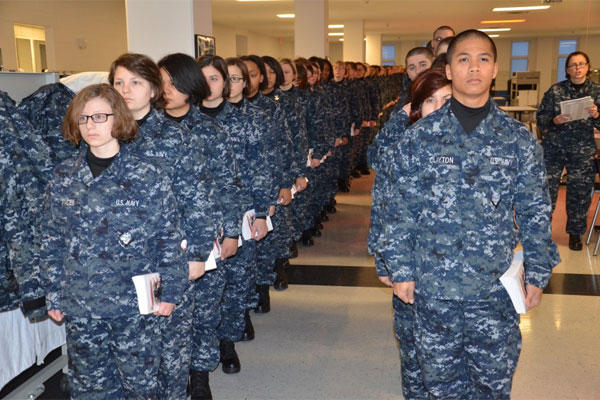The Navy's top officer is working to replace heavy volumes and reams of printed documents with sleek tablets -- for top brass and boot camp recruits alike.
Days after rolling out a new strategy for the service that prioritizes "high-velocity learning," Chief of Naval Operations Adm. John Richardson said Monday that improved use of technology would play a key role in achieving his learning goals.
At boot camp, he said, Master Chief Petty Officer of the Navy Mike Stevens has already begun an a pilot program that offers recruits tablets filled with reading materials instead of an unwieldy library of books.
"We're finding that those young recruits are learning so much faster by virtue of doing that," Richardson told an audience at the National Press Club in Washington, D.C. "Not only because that's kind of the way they've come to absorb information but also because they can carry that thing everywhere."
Richardson said the move also allowed the recruits to take advantage of mealtimes to do additional reading, something that wasn't practical with traditional bound books.
"These folks are focused on doing the best job they can and this tablet allows them to do that," he said.
Similar changes are taking place at the most senior echelons in the Navy, Richardson said.
When he became CNO in September, Richardson said he would receive a daily briefing on intelligence and operations via a 2.5-inch thick binder full of printouts. A similar binder was delivered to most of the officers who reported directly to him, he said. So he proposed putting the briefing documents on a tablet instead of printing them out, he said. While the proposal was initially met with institutional resistance, he said he continued to push for the change.
"I currently have a tablet," he said "We save $5,000 a month in paper and toner, consumables that were going into that. It's paid for itself."
The tablets also allow Richardson and other officers to do on-the-spot research and delve deeper into briefing topics, the CNO said.
In coming months, he and Stevens plan to take a "hammer-and-anvil" strategy to apply this technology throughout the fleet, with Richardson moving top-down through the senior ranks and Stevens working with recruits and junior sailors.
And while Richardson's plan to improve learning throughout the fleet is still in its infancy, he said officials have launched another pilot program at Navy shipyards, where civilian workers are now being hired aggressively and then subjected to a decades-old and inefficient "industrial training process."
That training is now being analyzed by "some people who are very attuned to high-velocity learning" to find was to improve and modernize processes and move new hired into the productive workforce as quickly as possible, Richardson said.
"You bring people in the door at a great rate and great commitment by the nation and you run into a training program that really hasn't adapted for decades," he added. "How long does it take to bring someone in through the door, get them processed and then make them an effective worker down on the shop floor, in the dry dock, whatever their job may be?"
More elements of Richardson's high-velocity learning strategy have yet to roll out. According to his campaign design for the fleet, the Navy will also expand its use of simulators, online gaming and analytics in the near future to improve training and use of technology as a tool.
-- Hope Hodge Seck can be reached at hope.seck@monster.com. Follow her on Twitter at @HopeSeck.






























